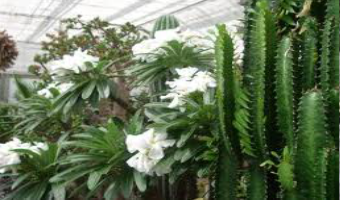 Frustrated with the poor returns from the traditional farming of cereals, farmers in Siaya have discovered a goldmine in morbdick, a plant they have traditionally relied on to cure flu and cold and whose demand in the international flower market has soared tremendously in the recent past.
Frustrated with the poor returns from the traditional farming of cereals, farmers in Siaya have discovered a goldmine in morbdick, a plant they have traditionally relied on to cure flu and cold and whose demand in the international flower market has soared tremendously in the recent past.
Morbdick, a tiny yet leafy plant featuring small buds that hold its seeds is a feral herb used for curing common cold. The juice crushed and squeezed from its leaves, when thrown into a stuffy nose prompts a person to sneeze out the flu virus.
However farmers in Siaya have recently cashed in on the growing demand for flowers abroad to sell the morbdick plant which is now being used to fill the gaps in bouquets featuring its more famous plant cousins like roses or carnations. The farmers are now earning between Sh15 and Sh75 per branch depending on the season the plant matures.
According to the morbdick farmers, organized into a 30 member group named Komolo, some clients abroad grade the branches according to the number of buds it has between the first 70 centimetres, while others grade them according to the branch thickness and leaves it contains. The balls which cluster together in branches are considered too, when making a bouquet.
The farmers have already had their high times on the sale of leafs during mothers day, Valentines day and Christmas when they couldn’t even meet the huge demand. However the demand for the flowers has been at an all time low during summer and spring months when the international customers opt to use variants of the plant.
Agricultural officers in the area say that majority of the Nyanza area favours optimum growth of the plant due to soils in the area which have relatively low acidic levels. To increase production of the plant, local agricultural officers have teamed up with the Ministry of Agriculture, the Kenya Agricultural Research Institute and a group of university lecturers to train farmers on how to plant the crop, cultivation procedures, the maintenance, cost effective integrated pest management practices and how to create a bouquet with Morbidick.
The group has however only managed to export 10,000 in every two weeks against a set target of 300,000 weekly due to skeptical farmers who have shied away from embracing the alien plant. Awareness trainings have therefore been organized in the province to increase the number of farmers in the group from the current 30 to 1000.
Farmers are also organizing how to buy their own cooling plant which they say will increase the production levels of the plant and insulate them from brokers who have been cashing in on the lack of storage space by the farmers to buy the plant at a cheap price.
The morbdick farmers are also placing their hopes on the timely completion of the Kisumu Airport expansion programme arguing that introduction of cargo flights to international destinations is likely to allow them to frequently export therefore increasing their revenue base.
Farmers found respite in the plant after having struggled to get returns from maize, beans and sweet potatoes which have been doing badly in the area. Decreasing stocks of fish in Lake Victoria where most of them relied on for small business and the increasing number of fishermen in the area who all compete for the dwindling fish stock have pushed all but the hardiest of farmers from the lakeside, setting the stage for Morbidick.
















Comments powered by CComment